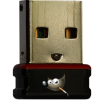| Welcome, Guest |
You have to register before you can post on our site.
|
| Latest Threads |
Why does HTML/css scale i...
Forum: General questions
Last Post: Tas_mania
Yesterday, 07:20 PM
» Replies: 1
» Views: 118
|
Path autocurves plugin (G...
Forum: Extending the GIMP
Last Post: InquisitiveAsHell
Yesterday, 07:40 AM
» Replies: 6
» Views: 617
|
Transparent Background Ad...
Forum: General questions
Last Post: Kramskry
12-16-2025, 08:52 PM
» Replies: 2
» Views: 292
|
Inside drop shadow maybe?...
Forum: General questions
Last Post: denzjos
12-16-2025, 04:45 PM
» Replies: 2
» Views: 233
|
gexport: Make-like tool f...
Forum: Extending the GIMP
Last Post: JohnHammersley
12-16-2025, 03:42 PM
» Replies: 0
» Views: 118
|
Help with colour matching
Forum: General questions
Last Post: denzjos
12-13-2025, 05:05 PM
» Replies: 1
» Views: 240
|
Problem posting an update...
Forum: Gimp-Forum.net
Last Post: Scallact
12-13-2025, 10:29 AM
» Replies: 14
» Views: 723
|
GIMP 3.x Python Plugin Is...
Forum: Scripting questions
Last Post: Ofnuts
12-13-2025, 08:53 AM
» Replies: 1
» Views: 237
|
Gimp larger than Screen
Forum: General questions
Last Post: sallyanne
12-13-2025, 03:53 AM
» Replies: 2
» Views: 263
|
Straighten your image bef...
Forum: General questions
Last Post: ESH
12-12-2025, 09:26 PM
» Replies: 4
» Views: 308
|
|
|
| resample with constrained proportions |
|
Posted by: TooManyTimeZones - 09-10-2021, 07:32 PM - Forum: General questions
- Replies (3)
|
 |
I have an image that is the correct size (length and width) but it is only 98 dpi. Before printing, I need to resample the image to increase it to 150 dpi without changing the size. Photoshop has this capability ("constrain proportions"), but I can't figure out how to do it in GIMP.
Is this possible in GIMP?
|

|
|
| Spheres Rendering Invisible |
|
Posted by: Pink Peony - 09-09-2021, 10:27 PM - Forum: Older Gimp versions (2.8, 2.6....)
- Replies (1)
|
 |
I'm trying to learn to use the Sphere Designer to make simple spheres. I made several and was happy with them, but now, the spheres always render invisible. They appear normally in the Preview pane, but when I click "OK," there is just a plain checkered background.
I have already clicked Reset and restarted GIMP. They still render invisible. I expect I've changed some kind of setting, but I don't know what it was.
One thing I know I played around with was the second color. (Orange spheres had an unpleasant blue tint I was trying to get rid of. I've set the second color back to black, so I don't think that's causing the invisibility problem.)
Help would be very much appreciated.
Sphere Designer screen clip
I figured it out. In the box for creating a new image, I had selected "Grayscale" for Color Space. Changing it to RGB fixed it. Thank you.
|

|
|
| Preserving Customizations if needing to Reinstall? |
|
Posted by: gravanoc - 09-08-2021, 01:47 PM - Forum: General questions
- Replies (1)
|
 |
Whenever I launch GIMP I get about 8 runtime errors, non-critical, that I think are related to plugins. I read elsewhere that the best bet is to reinstall to fix such nuisance errors. However, I'm concerned about how to preserve any customizations I've made, hotkeys, etc. I know of the MenuRC file, so perhaps I can make a copy of that and set it in an unrelated folder, then paste it back into the GIMP folder after installing. The rest I'm not sure about. Thanks for any help.
|

|
|
| Wavy Palaces Of the Ambassadors |
|
Posted by: Ofnuts - 09-08-2021, 11:40 AM - Forum: Gallery
- No Replies
|
 |
Source photo is not too good (Andalusia's skies aren't that blue in later October), but works OK as a demo of how to keep the center intact with Filters ➤ Distorts ➤ Waves.
|

|
|
|